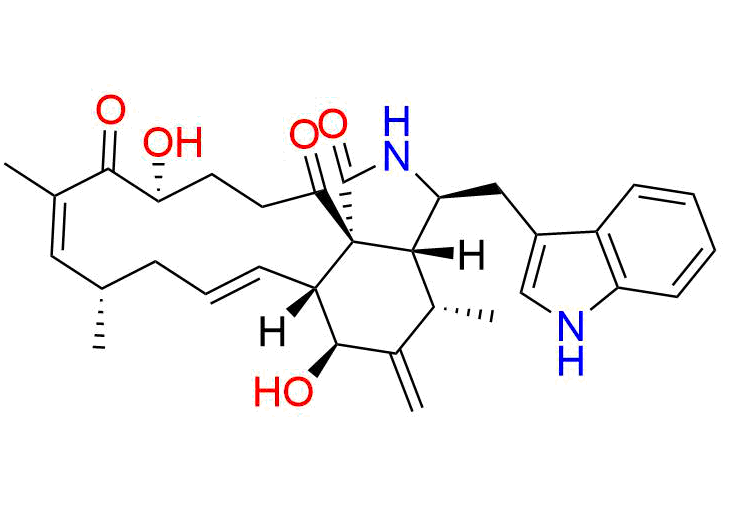
Chaetoglobosin Fex
CAS No. 149457-95-4
Chaetoglobosin Fex( —— )
Catalog No. M23645 CAS No. 149457-95-4
Chaetoglobosin Fex from the marine-derived endophytic fungus inhibits induction of inflammatory mediators via Toll-like receptor 4 signaling in macrophages.
Purity : >98% (HPLC)
 COA
COA
 Datasheet
Datasheet
 HNMR
HNMR
 HPLC
HPLC
 MSDS
MSDS
 Handing Instructions
Handing Instructions
| Size | Price / USD | Stock | Quantity |
| 5MG | 1728 | In Stock |


|
| 10MG | 2880 | In Stock |


|
| 100MG | Get Quote | In Stock |


|
| 200MG | Get Quote | In Stock |


|
| 500MG | Get Quote | In Stock |


|
| 1G | Get Quote | In Stock |


|
Biological Information
-
Product NameChaetoglobosin Fex
-
NoteResearch use only, not for human use.
-
Brief DescriptionChaetoglobosin Fex from the marine-derived endophytic fungus inhibits induction of inflammatory mediators via Toll-like receptor 4 signaling in macrophages.
-
DescriptionChaetoglobosin Fex from the marine-derived endophytic fungus inhibits induction of inflammatory mediators via Toll-like receptor 4 signaling in macrophages.
-
In Vitro——
-
In Vivo——
-
Synonyms——
-
PathwayOthers
-
TargetOther Targets
-
Recptorinflammation
-
Research Area——
-
Indication——
Chemical Information
-
CAS Number149457-95-4
-
Formula Weight530.65
-
Molecular FormulaC32H38N2O5
-
Purity>98% (HPLC)
-
SolubilityDMSO:10 mM
-
SMILESO=C1[C@]([C@](/C=C/C[C@@H](/C=C2/C)C)([H])[C@H](O)C3=C)(C(CC[C@@H](C2=O)O)=O)[C@]([C@@H]3C)([H])[C@H](CC4=CNC5=C4C=CC=C5)N1
-
Chemical Name——
Shipping & Storage Information
-
Storage(-20℃)
-
ShippingWith Ice Pack
-
Stability≥ 2 years
Reference
1.Dou H , Song Y , Liu X , et al. Chaetoglobosin Fex from the Marine-Derived Endophytic Fungus Inhibits Induction of Inflammatory Mediators via Toll-Like Receptor 4 Signaling in Macrophages[J]. Biological & Pharmaceutical Bulletin, 2011, 34(12):1864-73.
molnova catalog



related products
-
8-Gingerol
8-Gingerol shows antipyretic and anti-inflammation characteristics.
-
ISRIB-A15
ISRIB-A15 (ISR-IN-2) is an potent inhibitor of the integrated stress response with an EC50 of 0.8 nM.
-
Flumethrin
Flumethrin is a pyrethroid insecticide. It is used externally in veterinary medicine against parasitic insects and ticks on cattle, sheep, goats, horses, and dogs, and the treatment of parasitic mites in honeybee colonies.



 Cart
Cart
 sales@molnova.com
sales@molnova.com


